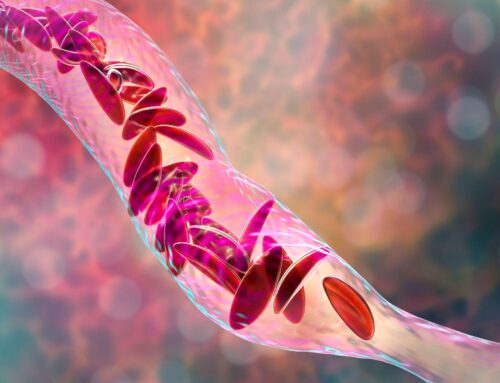Looking for something?
Can siRNA Therapeutics Heal the Brain?

As we’ve reviewed in past articles the discovery and history of RNA interference and siRNA as a potent therapeutic modality, it brings us to a fascinating idea. Does siRNA carry the potential to heal the brain? If so, can it treat more than genetic diseases? What about brain tumors and cancers, Alzheimer’s disease, Multiple Sclerosis, stroke, or behavioral conditions? Utilizing siRNA to heal the brain is an up-and-coming space that has recently seen exciting breakthroughs, and effective treatments for many of these conditions may be a reality very soon.

Most of the organs in the human body are relatively straightforward to understand how they work and, therefore, present less of a challenge to treat. In contrast, the human brain is highly complex, and we are still discovering the intricacies of how it functions. The brain’s natural defenses, including the blood-brain barrier, which is designed to keep out any foreign materials, make brain disorders particularly challenging to treat. This leaves the field wide open to any treatment modality that can overcome the difficulties inherent in healing the brain.
Cue siRNAs. Many brain conditions, such as Alzheimer’s disease, Huntington’s disease, and even brain cancer, could be treated through gene silencing. The effects of others could be greatly diminished, stroke being one example. This makes siRNAs a perfect candidate for treating many different categories of brain disorders – if only we could deliver them safely, in a way that produces results.
Although it was only discovered in 2001 that siRNA was useful in silencing genes in mammalian cells, it just took a couple of years for scientists to begin exploring the potential of siRNA to treat brain disorders. HIV-1 encephalopathy (1), chronic neuropathic pain (2), spinocerebellar ataxia type 1 (3), Machado-Joseph disease (4), Huntington disease (5), Alzheimer’s disease (6, 7), Multiple Sclerosis (8), and CNS tumors (9, 10) were a few of the earliest targets.
In 2005, Amy E. Lovett-Racke reviewed the potential of siRNA as a strategy to treat central nervous system diseases and she concluded that “it will soon be possible to design therapeutic interventions with siRNA that are specific for certain pathologic conditions and have relatively few systemic adverse effects (11).” While this has recently proven true in the liver, it is taking a bit longer to realize this goal in the CNS.
What is causing the delay in creating siRNA medications for brain disorders?
Delivery constraints have caused RNAi agents to be utilized primarily in the liver. As we discussed in a previous article about siRNA, one of the biggest difficulties in creating siRNA therapeutics lies in the ability to deliver them to various tissues. As there is a wide range of conditions that affect the brain without effective treatments, developing siRNA medications to meet this need has understandably become the focus of many researchers. However, until recently, when injected directly into the brain, siRNA only affected cells near the injection site, and only caused gene silencing for a short duration (12). This requires frequent administration which would cause significant hardship on patients needing the treatment.
Chemical modifications and conjugates are thought to be the answer. It is just a matter of finding the correct modifications and combinations that will allow delivery to the CNS and increase stability and durability of the siRNA while eliminating off-target effects and stimulation of the immune response.
Multiple innovations are leading us closer to using siRNA therapeutics in the brain.
In 2018, Alnylam Pharmaceuticals presented initial data showing that a novel siRNA conjugate resulted in broad distribution and gene silencing throughout areas of the brain and spinal cord of mice. The conjugates utilized the enhanced stabilization chemistry (ESC) developed by Alnylam with additional modifications. Both Givlaari and Oxlumo, which have been approved by the FDA, utilize Alnylam’s enhanced stabilization chemistry, so there is precedent showing that ESC increases potency and durability and at the same time is safe for humans.
Khvorova and colleagues developed a chemically modified siRNA architecture, called divalent siRNA (di-siRNA), that supports potent, sustained gene silencing in the CNS of mice and nonhuman primates. Incredibly, the silencing persisted for six months in the brain and spinal cord after a single injection into the cerebrospinal fluid. They also found substantial distribution in the brain and spinal cord, targeting of both neurons and glia, minimal off-target effects, and no detectable toxicity. siRNA often creates a strong immune system response, yet there was no detectable difference in brain inflammation, blood chemistry, or cell counts (13).
The modifications are particularly intriguing because the siRNA was synthesized in a way that allowed for the parallel growth of two oligonucleotides: two covalently connected sense strands. The di-siRNAs also contained 26 phosphorothioate (PS) backbone modifications. Alterman and colleagues discovered that when the number of PS modifications was reduced, silencing was also reduced. If the PS modifications were completely removed, gene silencing was completely eliminated (13).
Interestingly, to test di-siRNA, they used a siRNA sequence targeting the huntingtin gene, which causes Huntington’s Disease (HD). Perhaps this may lead to new hope for people who suffer from HD, especially in light of the recent disappointment of the halting of a phase III trial of an ASO to treat HD.
In 2020, Zhou et. al published results of a stabilized siRNA nanomedicine (Gal-NP@siRNA) with superior blood stability that efficiently penetrates the blood-brain barrier. They targeted BACE1 to treat Alzheimer’s disease (AD), and Gal-NP@siBACE1 restored the deterioration of cognitive capacity in AD mice without notable side effects (14).
A team at the University of Michigan engineered a synthetic protein nanoparticle (SPNP) containing siRNA to treat Glioblastoma (GBM), which is the most aggressive form of brain cancer. When combined with radiation, the tumors regressed and 87.5% of the mice survived long -term. Perhaps of equal significance, the immune system was primed to develop anti-GBM immunological memory after treatment (15).
Just last month, in March of 2021, Bioasis published research showing that their proprietary xB3 platform technology efficiently delivers siRNA across the intact blood-brain barrier into the CNS. The team conjugated a 12 amino acid peptide to siRNA (16). The siRNA chosen downregulates the gene (NOX4) believed to be responsible for oxidative stress in ischemic stroke since mice that are deficient in NOX4 are mostly protected from neuronal death and oxidative stress after a stroke (17). Not only was the siRNA delivered in therapeutically effective doses, but the pretreated mice also gained improved recovery from stroke and protection against neurological deterioration. Since oxidative stress appears to cause the death of neurons, as well as triggering neuroinflammation, this technology could possibly be utilized for many neuropathologies (16).
Excitement about siRNA prompts companies to invest millions – and even billions – of dollars into developing siRNAs to treat brain conditions.
We have recently seen an incredible vote of confidence from major pharmaceutical companies and charitable organizations choosing to back the development of siRNAs in the brain.
In 2018, Dicerna Pharmaceuticals and Eli Lilly announced a collaboration focused on discovering and developing new medicines utilizing RNAi to treat neurodegeneration, cardio-metabolic disease, and pain (18). In November 2020, Dicerna announced that the FDA accepted their Investigational New Drug Application for the treatment of an undisclosed cardiometabolic disease. Hopefully, this will be swiftly followed by a candidate to treat neurodegeneration.
In 2019, Regeneron Pharmaceuticals and Alnylam Pharmaceuticals partnered in a billion-dollar deal to develop siRNA-based drugs for the central nervous system and the eye (18). They currently have nine preclinical CNS programs ongoing, two of which target Autosomal Dominant Alzheimer’s disease and Huntington’s disease.
DTX Pharma was awarded funding from The Alzheimer’s Association and the Rainwater Charitable Foundation in May of 2020. The funding supports their drug discovery research for tau-mediated disorders such as Alzheimer’s disease, Progressive Supranuclear Palsy, and Frontotemporal Dementia. They have created a platform called FALCON™ (Fatty Acid Ligand Conjugated OligoNucleotide) that utilizes fatty acids as targeting ligands to deliver siRNAs and ASOs to tissues throughout the body and promotes efficient non-toxic cellular uptake and enhanced systemic bioavailability.
Just this year, Atalanta Therapeutics was launched specifically to pioneer RNAi Therapeutics using branched siRNA (di-siRNA) to target neurodegeneration. They are focusing on Huntington’s disease (which was the target used to test di-siRNA), as well as Parkinson’s disease, Alzheimer’s disease, and other neurodegenerative diseases. Atalanta was funded by F-Prime Capital and is collaborating with Biogen and Genentech.
While these are some of the more prominent companies in this space, there are many other labs and interesting start-ups working on developing siRNAs for use in the CNS. If you are involved in siRNA research that was not mentioned in this article, we would love to have you post a link and a brief comment about your work below.
The future of treating brain disorders may be imminent.
Although it may seem like a long journey to some, it is actually quite amazing that we can travel from the discovery of a novel mechanism to investigating treatments in the human brain within a mere two decades. With the influx of funding and attention, it is possible that siRNA research and development may lead to effective treatments of brain disorders, and even aggressive brain cancers, in the very near future.
References:
- Pomerantz RJ. RNA interference:a potential novel therapeutic combating HIV-1 in the central nervous system. Arch Immunol Ther Exp (Warsz). 2004 Nov-Dec;52(6):401-9. PMID: 15577741.
- Dorn G, Patel S, Wotherspoon G, Hemmings-Mieszczak M, Barclay J, Natt FJ, Martin P, Bevan S, Fox A, Ganju P, Wishart W, Hall J. siRNA relieves chronic neuropathic pain. Nucleic Acids Res. 2004 Mar 16;32(5):e49. doi: 10.1093/nar/gnh044. PMID: 15026538; PMCID: PMC390346.
- Xia H, Qinwen M, Eliason SL, et al. RNAi suppresses polyglutamine-induced neurodegeneration in a model of spinocerebellar ataxia. Nat Med 2004;10816- 820
- Miller VM, Xia H, Marrs GL, et al. Allele-specific silencing of dominant disease genes. Proc Natl Acad Sci U S A 2003;1007195- 7200
- Chen ZJ, Kren BT, Wong PY, Low WC, Steer CJ. Sleeping Beauty-mediated down-regulation of huntingtin expression by RNA interference. Biochem Biophys Res Commun 2005;329646- 652
- Miller VM, Gouvion CM, Davidson BL, et al. Targeting Alzheimer’s disease genes with RNA interference: an efficient strategy for silencing mutant alleles. Nucleic Acids Res 2004;32661- 668
- Kao SC, Krichevsky AM, Kosik KS, Tsai LH. BACE1 suppression by RNA interference in primary cortical neurons. J Biol Chem 2004;2791942- 1949
- Lovett-Racke AE, Rocchini AE, Choy J, et al. Silencing T-bet defines a critical role in the differentiation of autoreactive T lymphocytes. Immunity 2004;21719- 731
- Gondi CS, Lakka SS, Dinh DH, Olivero WC, Gujrati M, Rao JS. RNAi-mediated inhibition of cathepsin B and uPAR leads to decreased cell invasion, angiogenesis and tumor growth in gliomas. Oncogene 2004;238486- 8496
- Lakka SS, Gondi CS, Dinh DH, et al. Specific interference of urokinase-type plasminogen activator receptor and matrix metalloproteinase-9 gene expression induced by double-stranded RNA results in decreased invasion, tumor growth and angiogenesis in gliomas. J Biol Chem 2005;28021882- 21892
- Lovett-Racke AE, Cravens PD, Gocke AR, Racke MK, Stüve O. Therapeutic potential of small interfering RNA for central nervous system diseases. Arch Neurol. 2005 Dec;62(12):1810-3. doi: 10.1001/archneur.62.12.1810. PMID: 16344338.
- Davidson BL. Doubling down on siRNAs in the brain. Nat Biotechnol. 2019 Aug;37(8):865-866. doi: 10.1038/s41587-019-0204-1. PMID: 31375811.
- Alterman JF, Godinho BMDC, Hassler MR, Ferguson CM, Echeverria D, Sapp E, Haraszti RA, Coles AH, Conroy F, Miller R, Roux L, Yan P, Knox EG, Turanov AA, King RM, Gernoux G, Mueller C, Gray-Edwards HL, Moser RP, Bishop NC, Jaber SM, Gounis MJ, Sena-Esteves M, Pai AA, DiFiglia M, Aronin N, Khvorova A. A divalent siRNA chemical scaffold for potent and sustained modulation of gene expression throughout the central nervous system. Nat Biotechnol. 2019 Aug;37(8):884-894. doi: 10.1038/s41587-019-0205-0. Epub 2019 Aug 2. PMID: 31375812; PMCID: PMC6879195.
- Zhou Y, Zhu F, Liu Y, Zheng M, Wang Y, Zhang D, Anraku Y, Zou Y, Li J, Wu H, Pang X, Tao W, Shimoni O, Bush AI, Xue X, Shi B. Blood-brain barrier-penetrating siRNA nanomedicine for Alzheimer’s disease therapy. Sci Adv. 2020 Oct 9;6(41):eabc7031. doi: 10.1126/sciadv.abc7031. PMID: 33036977; PMCID: PMC7546706.
- Gregory JV, Kadiyala P, Doherty R, Cadena M, Habeel S, Ruoslahti E, Lowenstein PR, Castro MG, Lahann J. Systemic brain tumor delivery of synthetic protein nanoparticles for glioblastoma therapy. Nat Commun. 2020 Nov 10;11(1):5687. doi: 10.1038/s41467-020-19225-7. PMID: 33173024; PMCID: PMC7655867.
- Eyford BA, Singh CSB, Abraham T, Munro L, Choi KB, Hill T, Hildebrandt R, Welch I, Vitalis TZ, Gabathuler R, Gordon JA, Adomat H, Guns EST, Lu CJ, Pfeifer CG, Tian MM, Jefferies WA. A Nanomule Peptide Carrier Delivers siRNA Across the Intact Blood-Brain Barrier to Attenuate Ischemic Stroke. Front Mol Biosci. 2021 Mar 26;8:611367. doi: 10.3389/fmolb.2021.611367. PMID: 33869275; PMCID: PMC8044710.
- Kleinschnitz, C., Grund, H., Wingler, K., Armitage, M. E., Jones, E., Mittal, M., et al. (2010). Post-stroke inhibition of induced NADPH oxidase type 4 prevents oxidative stress and neurodegeneration. PLoS Biol. 8 (9), e1000479. doi:10.1371/journal.pbio.1000479
- Sheridan C. Billion-dollar deal propels RNAi to CNS frontier. Nat Biotechnol. 2019 Jul;37(7):702-704. doi: 10.1038/d41587-019-00014-7. PMID: 31267098.








